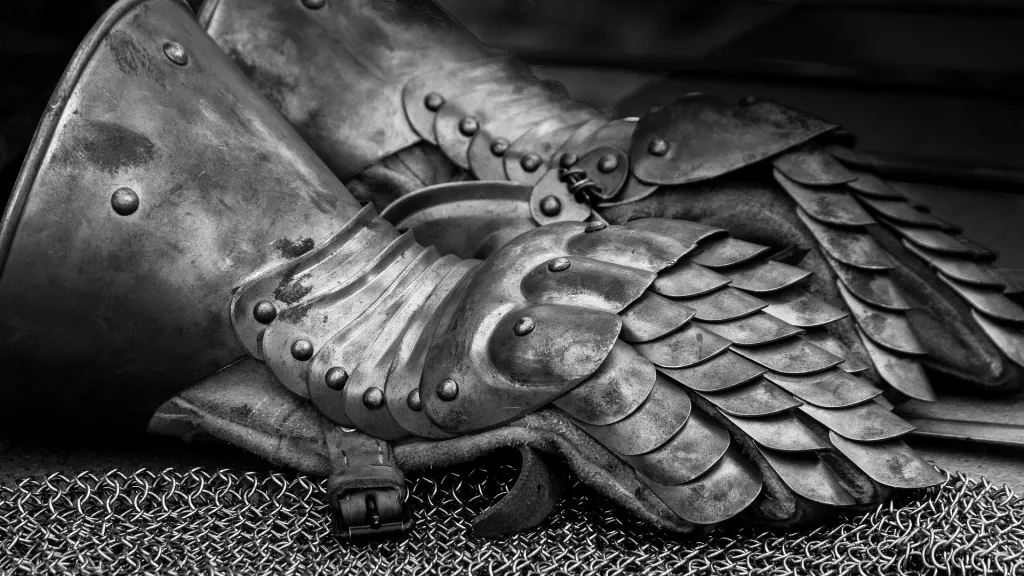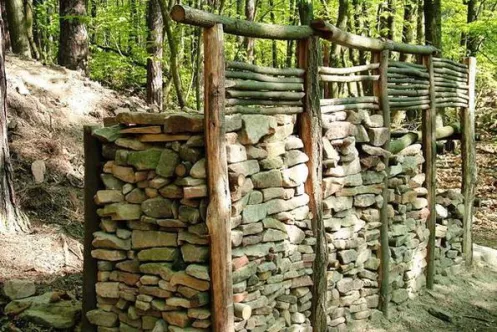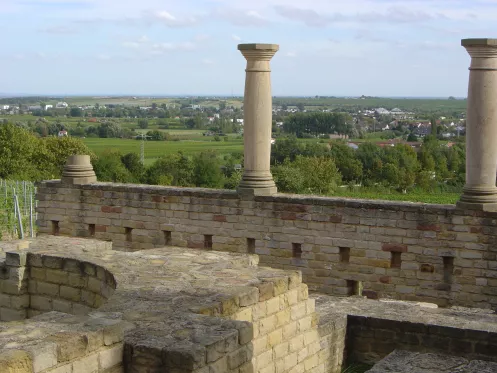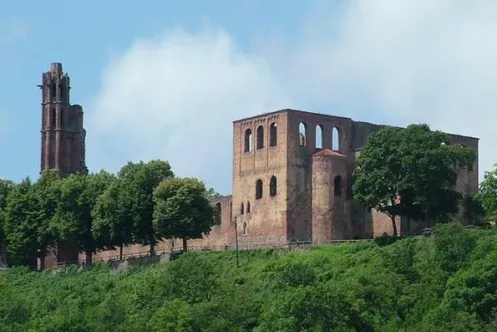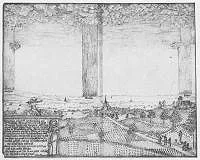Of Celts, Romans, war and peace.
Already in the Stone Age people settled in our area, primitive stone tools and hunting implements testify to the first human traces as hunter-gatherers; later, in the Neolithic Age, when people became sedentary, they also practiced agriculture and animal husbandry.
In the younger Iron Age (450 B.C. - 0) the Celts settled the land.
They are the oldest tribe of people known by name in this area. The "Heidenmauer" (Heathens Wall) near Bad Duerkheim, a Celtic refuge with a ring wall, dates from this time. A richly furnished grave find at the time of the railroad construction in the 19th century, as well as excavations in 2009 on the mountain plateau of the Limburg monastery ruins near Bad Duerkheim even suggest the seat of a Celtic prince or a Celtic princess there.
But then it started. The Romans came over the Alps and stayed in this region as an occupying force for about 500 years. And as it was so common, people arranged themselves, lived together, intermarried. One kept a part of one's culture, a part of the foreign culture was taken over and from the fusion of both cultures the Kelto-Romans emerged.
This was a turning point for our region, because ...
... what would have happened if the Romans had not come?
We owe them the cultivation of wine with everything that goes with it, and they brought us the "Keschde" (sweet chestnut), because they needed the wood of the trees for the vineyard stakes and the barrel construction.
Many of our settlements were built along Roman trade routes. Civil Roman settlements were established and veterans were given estates, such as the Villa Rustica in Wachenheim or the Roman winery "Weilberg" near Ungstein, both very close to the Freinsheim holiday region.
Numerous cities on the left bank of the Rhine date back to Roman forts such as Mayence, Speyer or Worms. Speyer and Worms became centers of Romanization; Speyer became a bishop's seat as early as 346.
As known from the history lesson...
... the disintegration of the Roman Empire begins at this time. The Merovingians take power from the 5th to the 8th century. King Clovis builds up the great empire of the Franks. His sons divide the empire into "Gaue" (districts), in which the "Gaugraf" (district count) represents the king. At that time, our region belonged to the Speyergau and the Wormsgau. Especially Dagobert I. is remembered as a farmer friend and in our region as the founder of the "Ganerben", the local forest district. This means that large, enclosed forest areas passed from the king's possession to general ownership for use.
The successors became the Carolingians (768 - 911). Their most famous representative is the Frankish Charlemagne. He is crowned the first emperor of the "Holy Roman Empire" (800 in Rome). The first documentary entries in our area also fall into this period. Dackenheim is first mentioned in the Lorsch Codex in 768, Kallstadt in 824 as well as Weisenheim/Bg. in 771 and Weisenheim/Sand in 771. Erpolzheim goes back to a foundation of the Frankish clan leader "Erbold". Freinsheim is first mentioned in writing as "frainsheim" in a monastic document from 774, as is Herxheim am Berg.
Carolingians are followed by Conradins...
... and Ottonians until finally the Salians set the emperors. They are very important for our region, because the laying of the foundation stone of the Speyer Cathedral by Konrad II around 1027 falls into their time.
But before that he rededicated his ancestral castle "Limburg" into the only imperial monastery of the Salian dynasty as thanks for his election as German king. The Benedictine abbey was completed in 1042 and consecrated in the presence of the ruler.
The great importance of the monastery - in its time it was one of the most important church buildings in the Christian world - is particularly emphasized by the fact that the imperial regalia were kept there for over thirty years.
This is followed by the Stauffer with Frederick Barbarossa and Henry VI.
The country went through exciting times.
The history of the "Pfalzgrafenschaft" (Palatinate Counties) begins. It is not a closed territory, but a mixture of territorial rule, fiefdoms, bailiwick, customs, tax, hunting and escort rights. In 1156, Emperor Barbarossa confers the dignity of Count Palatine on his stepbrother Konrad von Staufen. In 1329, Bavaria and the Palatinate are separated. The time of the Palatine electors begins and with it constant feuds and quarrels with the knightly dynasties, which had been strengthened until then. In our region, these were especially the Counts of Leiningen or Palatinate-Zweibruecken, who were from now on almost in constant feud with the Elector.
Bitter wars of succession raged, e.g. the Landshut War of Succession from 1503-1505, during which, among other things, the Limburg monastery was destroyed. The region is torn between the individual dominions: Freinsheim, Dackenheim and Weisenheim/Sand came to the Electoral Palatinate and remained there for more than 300 years.
Even before this time, the strong fortification wall with its mighty city gates was built in Freinsheim. In contrast, the other villages remained in the domain of the Leiningen counts and the village of Herxheim am Berg was also provided with a defensive wall, precisely against the Elector Palatinate.
The plague raids depopulated whole villages. Wars of succession, peasant uprisings during the Reformation and the Thirty Years' War did the rest. The Palatinate War of Succession of 1688-1697, in which the French King Louis XIV tried to enforce alleged hereditary claims of his sister-in-law Liselotte of the Palatinate, raged the worst. The medieval town of Freinsheim also burned down in this war.
The pen and ink drawing by Peter Hamman from 1690 (photo: Worms City Archives) shows Freinsheim on May 31, 1689, four months before its destruction. The clouds of smoke from the burning cities of Oppenheim, Worms and Speyer stand like pillars on the horizon.
Speyer, Worms, Alzey and also the beautiful Heidelberg were destroyed, it was without doubt the most brutal war up to then - the Palatinate was in flames.
From the 18th century until today
But before the French Revolution of 1789 spills over the border with the Revolutionary Wars, let's quickly take a look at the other important family in our region, the Counts of Leiningen. They are "reichsmittelbar" (kind of independent), but through fiefs also responsible to the Elector. They split into several lines by division of inheritance. Their ancestral castle is Altleiningen. Likewise, they become lords of Hardenburg Castle west of Bad Duerkheim, by being entrusted with the protective bailiwick over Limburg Monastery. In 1779 they are even elevated to the status of imperial princes.
During the French Revolution that followed, the Palatinate, as a direct neighbour, was again severely affected. In 1801, the area on the left bank of the Rhine becomes French territory. The "Code Napoleon" ("Code Civil") is introduced. After Napoleon's defeat, the Palatinate becomes part of Bavaria in 1816 as a result of the Congress of Vienna. This remains so until 1945.
On August 30, 1946, the federal state of Rhineland-Palatinate is created from the Palatinate, Rhinehesse and parts of the Prussian Rhine provinces.
